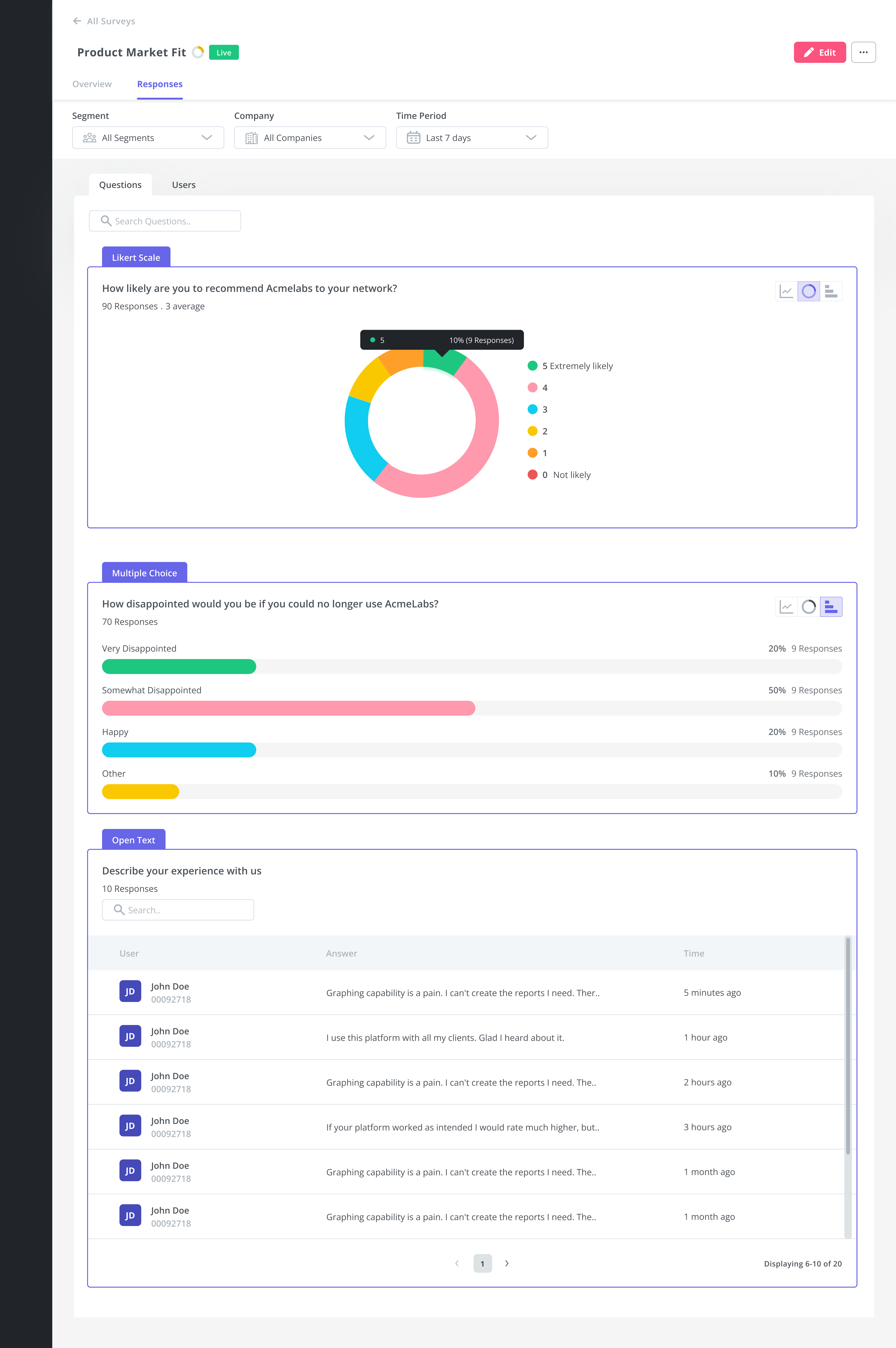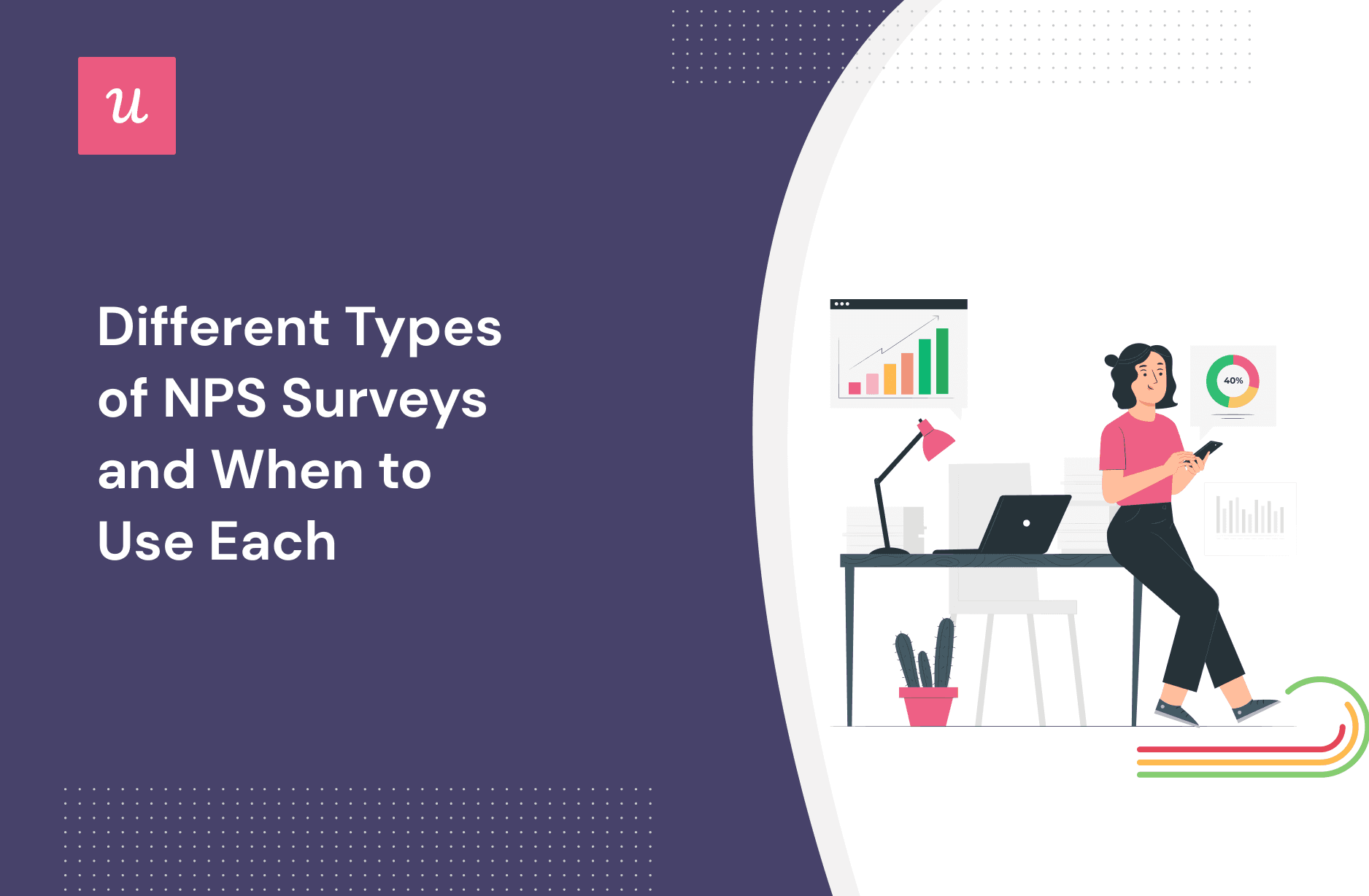
Looking for the types of NPS surveys and their nuances?
You clicked on the right link.
Understanding NPS survey types will help you measure customer sentiment the right way. You’ll easily spot friction across critical customer touchpoints and address them to smoothen the user experience.
This article not only shows you the differences but tells you when to trigger each, and how to use NPS to drive business growth.
What’s your primary goal for exploring different types of NPS surveys?
When would you ideally trigger the survey?
It looks like you want to improve loyalty with targeted feedback.
Whether you need a high-level Relational survey or a granular Transactional survey, the key is triggering it to the right user at the right time to get actionable insights.
Ready to create the right types of NPS surveys without code?
Userpilot lets you build and trigger both Relational and Transactional NPS surveys contextually. See exactly how it works and how it can fit your goals.
Try Userpilot Now
See Why 1,000+ Teams Choose Userpilot

What is Net Promoter Score survey?
A Net Promoter Score (NPS) Survey is a customer loyalty survey that measures the likelihood of customers recommending you to their friends and colleagues.
The survey uses an 11-point scale (0-10), and there are three types of responses based on the scores:
- Promoters: These customers rate you a 9-10. They are your most loyal customers.
- Passives: Customers who give a rating of 7 or 8. They are moderately satisfied but not as enthusiastic as Promoters. Passives are considered neutral and may or may not actively promote your company.
- Detractors: They rate you 0-6. These respondents are dissatisfied with your tool and on the verge of churn.
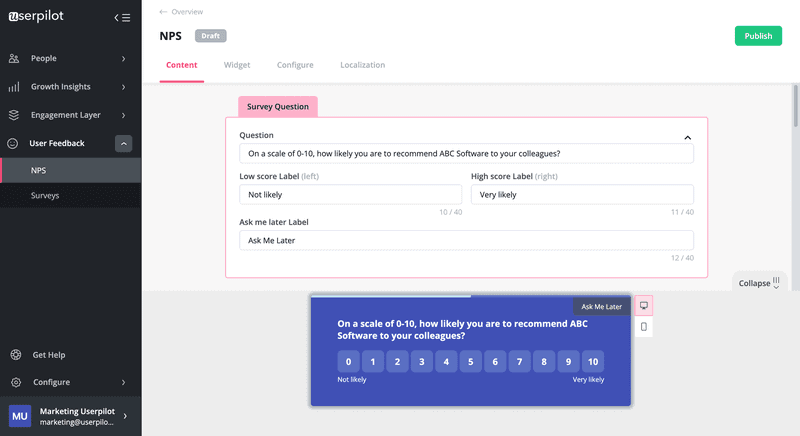
What are the different types of NPS surveys?
There are two main types: transactional and relational, each used in different scenarios. This section goes deep into the types and shows you when to use them.
Transactional NPS survey (tNPS)
This survey measures Net Promoter Score feedback at a granular level after specific customer interactions.
tNPS surveys are important because they help you:
- Collect real-time customer feedback while the memory is still fresh in customers’ minds.
- Pinpoint what exactly is going wrong in the customer journey so you can fix it.
- Discover drivers of customer satisfaction and loyalty so you replicate them for new signups with the same goal.
When to send transactional NPS surveys?
Timing is critical when it comes to tNPS surveys. As mentioned, they are sent after a specific interaction to collect immediate feedback.
For the best results, send your surveys at the following points in the customer journey:
During the onboarding process to get insights into customer experience
NPS triggered during onboarding will enable you to measure the effectiveness of your onboarding flows and help resources.
Follow up your survey with a qualitative question asking respondents the reason for their score. This will give you rich insights you can use to refine your onboarding strategy and improve the customer experience.
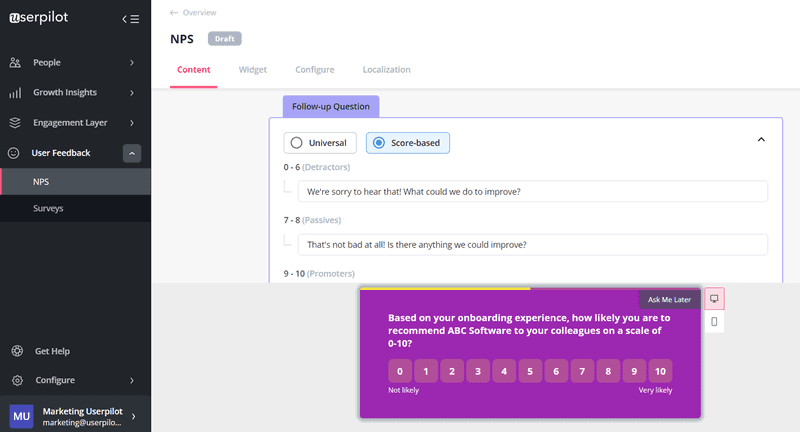
Send after the free trial ends to understand why they converted
Users who become paying customers can provide insights into what worked well. Perhaps the free trial length was just enough to convince them your tool is worth it, or they found the onboarding short and tailored to their use case. You can’t know for sure until you hear from them.
Of course, it goes without saying that this NPS is highly specific. You don’t want to trigger it to users that aren’t on the free trial or haven’t finished their trials.
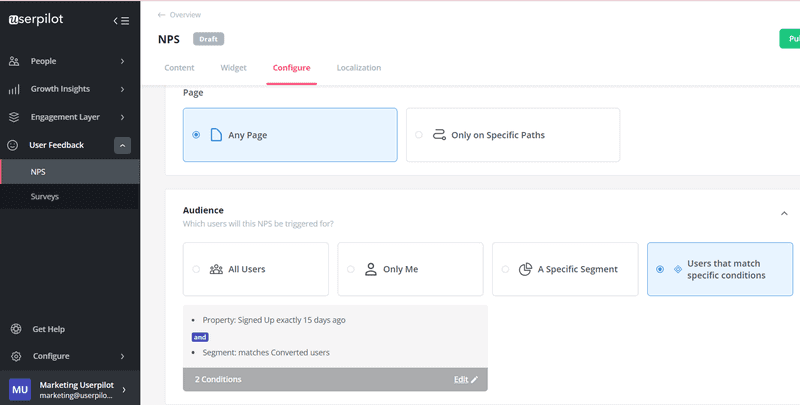
Upon a customer support interaction to measure customer satisfaction with the help received
A quick NPS survey after a user interacts with your support agents or self-serve support portal will show you how well you’re performing. You know your support is good if a good percentage of respondents are promoters
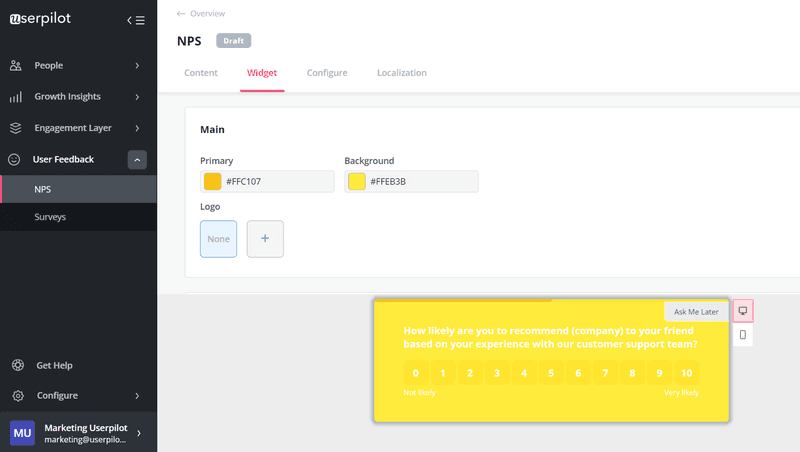
Don’t let passives and detractors go like that. Trigger a follow-up question to learn why they’re unhappy with your support. It will show them you care and also provide you insights for improving customer support.
After product updates to determine how they affect customer sentiment
Even if your customers were the ones to request updates, it’s still important to track how the change affects their satisfaction levels. After all, not every user requested the update.
A simple NPS (without follow-up) should suffice. Copy the question in the screenshot or write something similar and trigger it immediately after the user interacts with your new update:
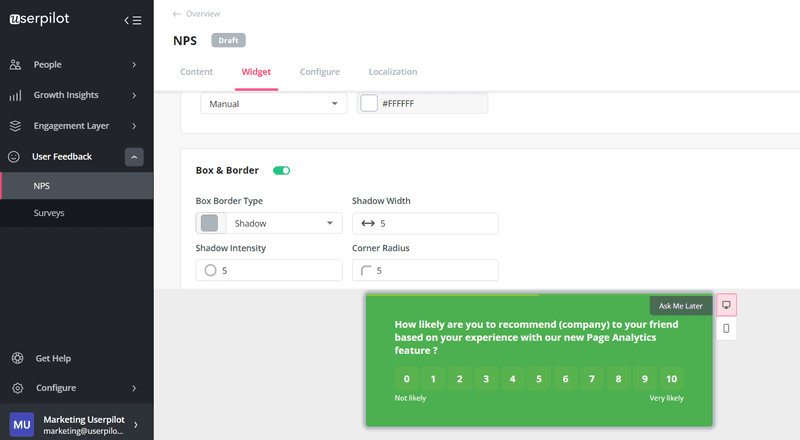
Post-purchase or plan upgrades to understand customer expectations
NPS surveys triggered after customers make payment will help you identify friction and areas of improvement in your checkout.
This is important to prevent involuntary churn when customers find it difficult to renew or upgrade their accounts.
With the data obtained from this survey, you can understand customer expectations and make changes accordingly.

Relational NPS surveys
Unlike transactional NPS surveys, which are touchpoint-specific, companies use relational NPS to collect data on a large scale and at regular intervals.
This survey type is designed to gather information on the health of your brand identity and customer relationships. It’s also perfect for internal benchmarking.
When to send relationship NPS surveys?
There are basically two ways to send relationship surveys: time-based or based on usage frequency.
Time-based surveys to measure customer loyalty at set intervals
This is you regularly checking on users to ensure they’re satisfied and your product serves them well. You can trigger your rNPS quarterly, bi-annually, annually, etc. – just don’t do it too frequently, or you risk survey fatigue.
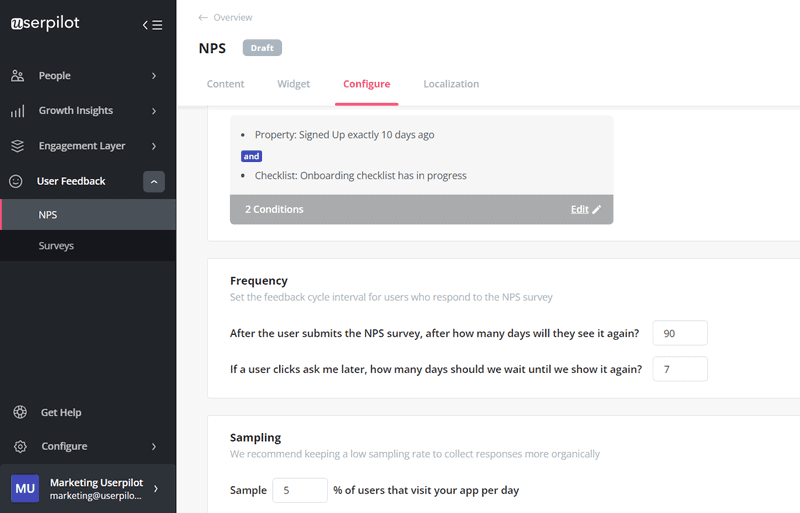
Send rNPS surveys based on average lifetime and product usage frequency
This is especially if you have software that users visit just once or twice monthly—e.g., an invoicing app.
You can’t rely on transactional NPS to gain insights from such users. Instead, decide on a usage frequency to trigger your surveys. For example, you might want to send your surveys after 2-4 logins.
Transactional NPS (tNPS) survey vs relationship NPS (rNPS) survey – which one should you go for?
The main difference: transactional surveys aims to get feedback about specific interactions, while relational NPS gauges overall customer satisfaction with your brand.
This difference affects the survey frequency. For instance, you could send a new feature NPS survey once and never bother collecting user feedback on that feature again.
However, relational NPS surveys must be sent regularly so you can act on the feedback to improve customer relationships.
So, which should you go for?
It really depends on your objectives at the moment, but we recommend both types.
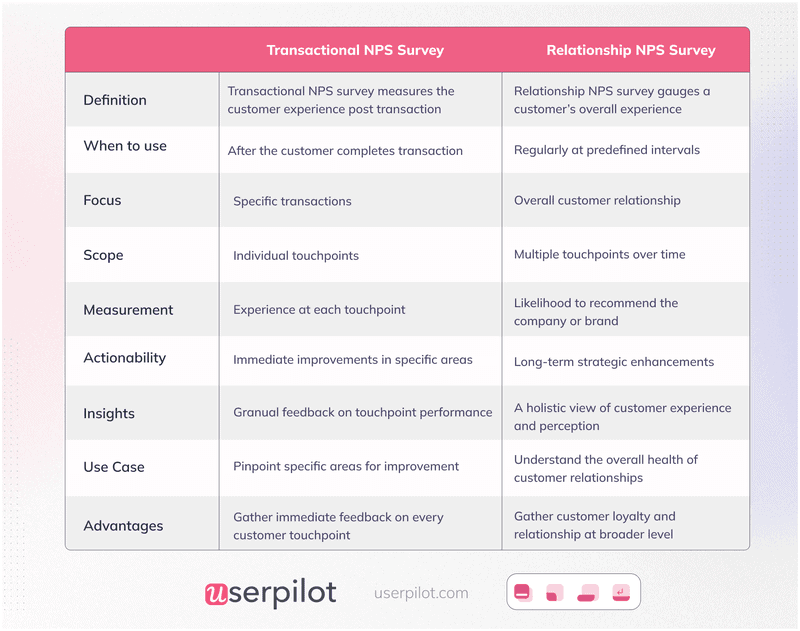
How to use relational and transactional NPS data to drive business growth?
After collecting NPS data, you can create segments based on scores and implement personalized retention marketing strategies for each.
We compiled some strategies you can implement based on NPS data.
Segment detractors and reach out to them to offer personalized help
Reaching out shows customers you care about their experience, and they’d be more willing to provide in-depth feedback.
You can message detractors in-app or via email. When you do, aim to find the reasons for their dissatisfaction and offer contextual solutions where possible. Sometimes, it’s not possible to fix customer issues, but still, let them know rather than keep them in the dark.
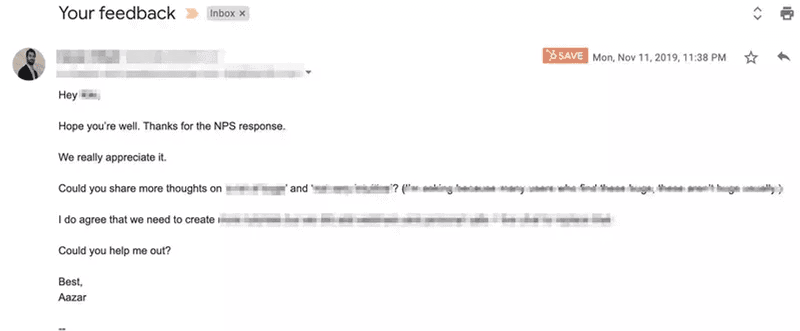
Invite passives to interviews to learn more about their expectations
Passives are generally satisfied but not impressed. Interview them to understand what you can do to wow and turn them into raving fans.
Video calls work best for this sort of interview. You’ll see the user’s facial expressions and relate better with them.
Before conducting the interviews, create a structured plan with specific questions and topics you want to cover. This will ensure you gather consistent and relevant information from each interviewee. Ask open-ended questions and listen actively.
To invite passives to interview, segment them and trigger an in-app slideout like this:
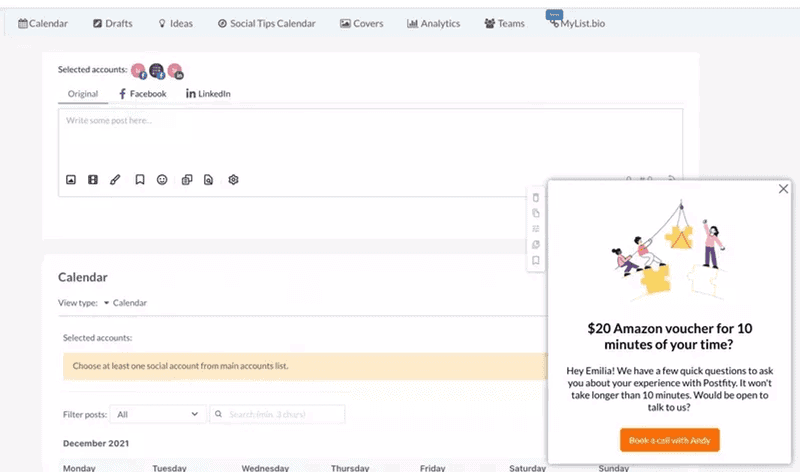
Encourage promoters to drive word-of-mouth referrals
Send a modal to your promoters, asking them to leave a testimonial on any review platform of your choice. Trigger it after the NPS survey, as the user is still in feedback mode.
Then, you can use the testimonials from promoters as social proof in your acquisition marketing to attract more potential customers.
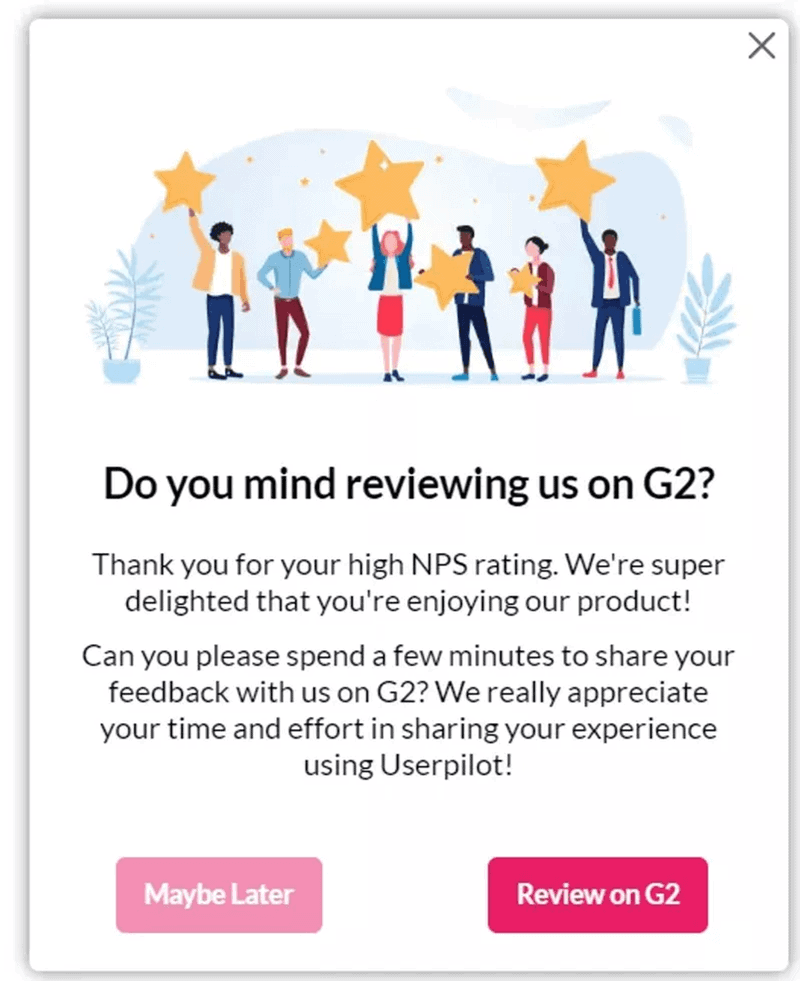
Create transactional and relationship NPS surveys code-free with Userpilot
Userpilot is a product adoption tool with advanced features to help you automate NPS surveys, collect personalized feedback, trigger follow-ups, and segment users to analyze their responses.
Here’s how to use it:
Trigger surveys contextually across the customer journey with custom events
An event is an action or series of actions a user takes while engaging with your product.
In Userpilot, you can use custom events to define when a user reaches specific milestones, then trigger a survey.
For example, your custom event can be a first-time feature engagement, customer support interaction, etc. Each customer that completes the action will see an NPS survey.
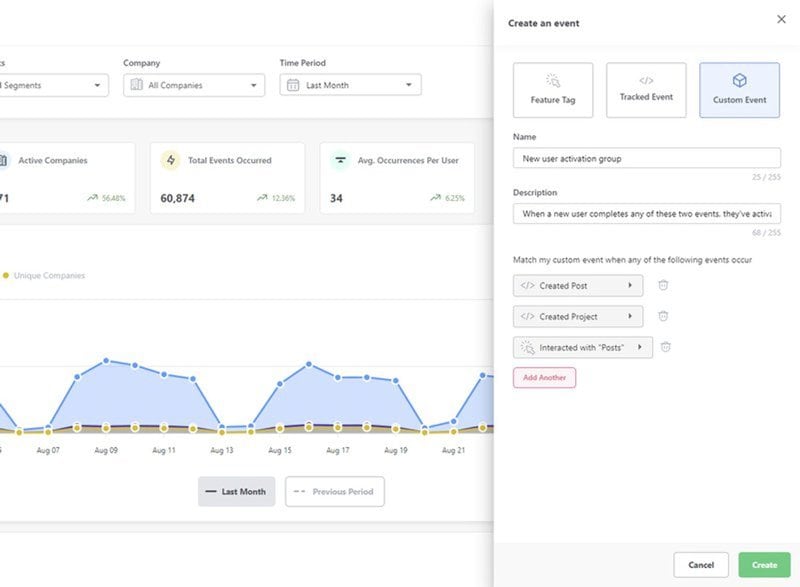
Tag open-ended responses to spot patterns correlating with scores
NPS analysis is an important part of the feedback loop. The entire process can be tasking, but Userpilot makes it easy.
Our platform lets you tag your qualitative responses using specific keywords. At the end of the day, you can look at a glance and know what customers complain/love the most.
For example, from the image below, you can see customer support is a common concern among detractors, while promoters mentioned UI/UX as their favorite aspect of the product.
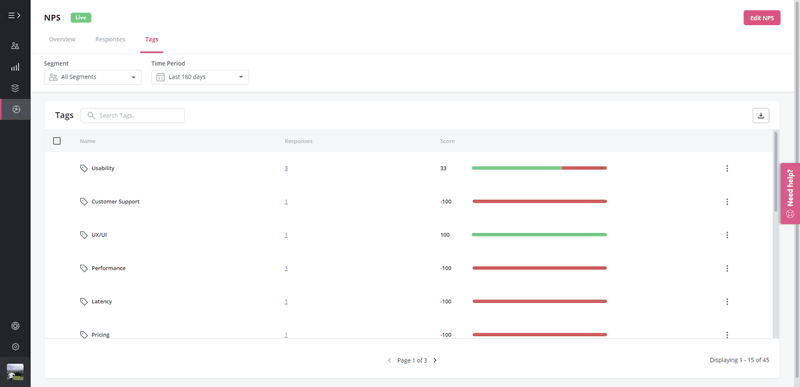
Get insights into survey analytics
Apart from response tagging, you can perform in-depth analysis to see how your surveys are performing (e.g. monitor completion rates, get background details on respondents, etc.).
This data will let you see how to optimize your surveys and boost responses.
Conclusion
Transactional and relational Net Promoter Score surveys complement each other. Using both, you can get a bird’s eye view of how your company is performing and spot trends in customer satisfaction across different touchpoints.
Userpilot can help you implement both types of Net Promoter score surveys. Book a demo now to see how you can use our platform to start measuring customer sentiment and loyalty for your SaaS.

